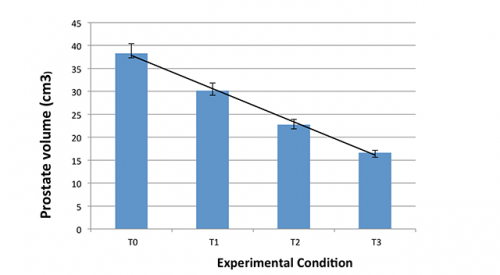Nonsurgical treatment for enlarged prostate on the horizon

You just cannot ignore your symptoms any longer. You find yourself getting up many times every night with the urgency to urinate. Saw palmetto, even high doses of the highest-quality type, didn't work.
A trip to the urologist results in bad news: a recommendation for surgery to treat your enlarged prostate (technically known as benign prostatic hyperplasia or BPH). A bit of Internet research on the proposed "transurethral resection of the prostate" makes you even more concerned – this surgery can result in sexual dysfunction and even impotence.
Aren't there non-invasive options to treat an enlarged prostate? A number of drugs can treat BPH but their side effects are worrisome.
A recent study on dogs with BPH offers hope. Just published in the online version of The Prostate, and coming out in print in August, researchers from the University of Bari, Italy report that pulsed electromagnetic field therapy – or PEMF – significantly reduced the size of the prostate starting after just one week of treatment. It is totally non-invasive, drug-free and the treatment is quick and painless. Finally, an alternative to surgery could be on the horizon!
Benign prostatic hyperplasia (BPH)
If you are a man over 50, you probably already know about BPH. It's one of the most frequently diagnosed medical disorders in older men, affecting quality of life for a third of men over 50. And it gets even more common as men age. BPH can result in serious problems over time, including frequent urinary tract infections, sexual dysfunction, the inability to urinate at all, and even bladder stones. In the U.S. alone, we spend $3.9 billion annually on its complications.
"Benign prostatic hyperplasia is an important and under-recognized health issue for men. There is a great need for development of effective and safe alternatives to current treatment options," noted Abraham Morgentaler, MD, FACS, Director of Men's Health Boston and Associate Clinical Professor of Urology at Harvard Medical School.
Treatment with PEMF
Pulsed electromagnetic field therapy is very low frequency pulsed energy waves, also described as a weak non-thermal electromagnetic field. PEMF is often used to speed recovery or to reduce post-surgical side effects. The energy comes from a handheld device – a little wider than a TV remote control – and is simply placed over the affected area. It has been used safely and effectively in humans for other conditions, such as circulatory problems, although exactly how it works is still unknown.
The lead scientist on the study, Dr. Raffaella Leoci, says "Previous studies have suggested that reduced blood flow to the prostate gland and resulting inflammation contribute to the development of BPH. We know that PEMF has positive effects on similar conditions, so we thought it might also heal BPH or maybe even prevent BPH from developing."
Just as in men, older male dogs often get BPH. According to VetSci, more than 80% of unneutered male dogs over 5 years old have BPH. Many cases go undiagnosed until the owner notices bloody urine. BPH may even result in obstruction of the colon in dogs, which may prevent defecation.
Scientists treated 20 affected dogs with PEMF for 5 minutes, twice a day, for three weeks. The size of the prostate gland decreased on average by 57% over the course of treatment, an impressive result. The researchers also found no side effects or impact on libido, semen quality, or testosterone levels.
"Traditionally, dogs affected by symptomatic BPH were treated like men, using drugs or surgery," explains Dr. Leoci. "Reproduction becomes impossible as both therapies, pharmacological or surgical, arrest the production of testosterone. This can be a problem for working or breeding dogs."
By contrast, the PEMF therapy did not affect reproduction. She adds that, "Dogs are not stressed by the therapy. Since it's applied as if it were a belly rub, dogs accept the PEMF application as a relaxing moment with the owner."
Next steps
Will men with BPH soon be able to get relief using PEMF treatment?
"Many men are interested in minimally invasive therapies for lower urinary tract symptoms," noted Alan Shindel, MD, Assistant Professor of Urology at UC Davis Health System. "It would be great to have a new option such as pulsed electromagnetic field therapy for BPH. This preliminary study in an animal model is promising, but more research is needed to determine how effective (and safe) this procedure would be in human men."














